Many people consider paddling and using a trolling motor as two opposite thoughts. But, in practice, these two ways make your pursuit enjoyable. A trolling motor saves your labor while taking you to the destination in just minutes. Your hands become mostly free. Fishing, if it’s one of your core objectives, becomes a great pastime. However, how much you can enjoy is largely dependent on the motor you have. So, knowing how to choose a trolling motor helps you a lot.
A trolling motor is a mechanical unit that provides small boats with propulsion. They don’t make much noise and are lightweight. A trolling motor becomes more than an option when you are kayaking under extreme weather. If you get caught in a storm, it will help you get back to safety quickly.
But, how to choose the perfect trolling motor? In this article, we will talk about the factors that make choosing the right trolling motor a breeze. Let’s begin!
Table of Contents
How to Choose a Trolling Motor?
In this trolling motor buying guide, we will talk about many things including the thrust and horsepower, boat weight, fishing conditions, how a trolling motor works etc. Following are the key points.
- Thrust and horsepower
- Battery and voltage
- RPM and speed settings
- Mounting options
- Control options
- Shaft length
Understanding Thrust and Horsepower
When we need to measure some static force, we use thrust which is expressed in pounds (lbs.). Horsepower refers to the maximum power put out by an engine. It’s the scientific expression of 550 ft.-pounds of work/second used mainly for gas-powered engines. So, you cannot simply compare the two if you have no ideas about the vessel’s speed as it absorbs the thrust. The rule is simple. With a big, heavy boat, you should look for more thrust and smaller boats demand a relatively lower amount of thrust.
1. Estimating the Electric Motor Horsepower
Estimating the electric motor horsepower requires the calculation of watts spent when the motor is at its peak. How can you calculate the exact watts? Read the user manual that came with the motor. It is usually given in amps.
Here’s how you can convert amps into watts. Multiply the amps with battery volts. If you have only one battery, multiply the amps by 12. If you have two batteries, multiply by 24.
If you have a motor that draws 60 amps at full speed and you use two batteries, multiply 60 by 24. You will get 1440 watts. How can you transfer watts to HP? Divide the watts you got by 746 (746 watts equal one horsepower). You will get 1.93 HP, the estimated HP output of your trolling motor at full speed.
2. Required Minimum Thrust in Relation to the Boat Length
You should pick the motor thrust value according to the size of your boat. Let’s take a look at this table:
| Boat length (feet) | Thrust (pounds) |
| 12 | 30 |
| 13 | 30 |
| 14 | 32 |
| 15 | 36 |
| 16 | 40 |
| 17 | 50 |
| 18 | 55 |
| 19 | 65 |
| 20 | 74 |
| 21 | 74 |
| 22 | 101 |
3. Consider Boat Weight
A very important consideration when choosing a trolling motor is its relation to the boat weight. As a general rule, every 100 pounds of weight require at least 2 lbs. of thrust. If your boat weighs 2000 lbs., divide this by 100 and multiply by 2. The pounds of thrust equal 40 lbs. of thrust. Of course, don’t forget that you must measure your boat weight when it is fully loaded, not empty.
4. Don’t Forget About the Fishing Conditions
A small amount of thrust is required for calm water. On the contrary, strong currents, rivers, and oceans require a higher amount of thrust. If you want to spend several days fishing, look for a powerful motor. Also, look for large battery power levels.
Using a trolling motor in saltwater means that the motor components may corrode quickly. So, a corrosion-resistant motor is desirable. The motor seals have to be strong. For freshwater kayaking, a regular motor with typical power output will be good.
Battery and Voltage
Battery and voltage are important areas of education for those trying to know how to choose the right trolling motor. These motors use special battery, also known as marine batteries. Trolling motor voltage may come in variants like 12 volts, 24 volts, or 36 volts.
A 12-volt motor uses one marine battery and a 24-volt motor uses two of them while the 36-volt motor uses three marine batteries. A 12-volt motor comes cheap and easy to operate with the least of power outputs. On the contrary 24-/36-volt motors are more expensive with the capability to deliver higher outputs. With a boat smaller than 16 feet, you may use a 12-volt battery motor. If the boat is larger than 16 feet, opt for a 24or a 36-volt battery.
1. Deep Cycle
Deep cycle batteries release the energy slowly and use a special mechanism to protect themselves and the motor. It allows the battery to be fully discharged and recharged. These batteries are very popular among the users and are a better choice than the starter batteries.
2. Starter Batteries
If you are using a starter battery, you must pay attention to the charge level. It should never drop below 50%. These batteries are designed in a way that requires recharging from 50% to 100%. These batteries release a significant amount of energy in a short period of time.
Unfortunately, this means that the battery life is rather short. Therefore, you should not use this type of battery all the time. You can use it only occasionally. Otherwise, you can damage the motor.
3. Wet Cell
Wet-cell batteries are older than the AGM batteries. They are also less expensive. However, they do require maintenance, unlike the AGM batteries. Also, the drawback of the wet-cell batteries includes the fact that they are not spillage-proof. They’re also sensitive to vibration.
You must refill the cells of the wet-cell battery with distilled water from time to time. You should also keep them in an upright position to avoid leaks. Experts do not recommend the use of this type of batteries for trolling motors anymore.
Another type of wet-cell batteries includes the Lead Acid Wet-Cell batteries. They are a good, balanced solution. They are not very expensive and not extremely sensitive. They last up to 3 years. Their price does not pass 100 USD. However, even these batteries are not spillage-proof. They also require a certain level of maintenance, including maintaining the proper level of water and vibration protection.
4. AGM
AGM batteries belong to the new battery generation. The key peculiarity of these batteries is full sealing. The electrolytes are captured in glass fiber mats. Their charge lasts longer. These batteries are spill-proof and vibration-resistant. Also, the lifespan of these batteries is longer – approximately four years. They don’t require maintenance. The disadvantage refers to the price. As they last longer, they are also more expensive.
Rpm and Speed Settings
Speed settings and options are a common feature of the majority of trolling motors. You are supposed to be able to operate the boat forward and reverse. You should be satisfied with your motor if it offers eight speeds.
If you are willing to pay more for a trolling motor, you can get motors with more speed settings that provide you more versatility.
RPM stands for Revolutions Per Minute. Simply put, this is the number of rotations in one minute around a fixed axis. Why is RPM important? If you know the RPM, you can easily calculate the maximum boat speed.
1. Mounting Options
There are two types of mounting options for a trolling motor. First of all, before you get a trolling motor, check whether there is enough space or not. If there is, check the mounting brackets. They should be adjustable. Based on the type of your boat, choose the most suitable variant – the bow mount or the transom mount.
Bow Mount
Bow mount motors can be easily recognized as they are always placed in the boat front. You should choose the bow mount motor if you have a large boat. What is a large boat? We imply boats that are longer than 14 feet.
Bow motors are beneficial for this type of boats as they pull it through the water, instead of pushing it. This increases boat mobility.
Transom Mount
Transom motors can be recognized by their position in the rear of the boat. You can think of them as of a type of a vessel. You should pick a transom mount motor for smaller boats.
2. Control Options
There are several types of control over your boat. They depend on boat size and style. You can choose between:
- Foot control
- Hand control
- Self-controlling system.
Hand Control
If you prefer a real-time response in control and operating your boat, you should definitely go for the hand control motor. You can easily maneuver the boat. Also, there is no clutter.
There are some drawbacks to the hand control mode though. Namely, it is harder to control your boat from the bow as your hand is not always on the steering rod. This is why this type of control is recommended for advanced users only.
Foot Control
If you prefer the hands-free experience, go for the foot control mode. You can easily use the motor. Moreover, this type of operation is perfect for beginners as it is the simplest one. It can be used anywhere in your boat, which is great.
The drawbacks of this type include cluttering on the pedal. This is why you should use this type of motor if there won’t be many people on the boat. The response rate is also slower than that of the hand control motor. There are also more parts that can break than in case of the hand control motor.
3. Determining the Right Shaft Length
The right shaft length is another important aspect when you want to know how to pick a trolling motor. What can happen if you choose a motor with a too long shaft? First of all, the control head is going to be positioned too high. As a result, you will notice that operation is weird, so to say. The other thing that can happen is a deep position of the motor head. This will cause drag. Moreover, it will literally eat your battery and can even cause some prop damages. It all together limits your thrust and speed.
If you pick a too short shaft, you will also face some problems. First of all, the motor head will be shallow. This will result in cavitation bubbles. Most noteworthy, it will produce a lot of noise. You won’t be able to enjoy your fishing trip and it will scare the fish. The thrust will also be reduced.
Regular boats usually require a 24” shaft. If you have a taller type of a boat, e.g. a sailboat or a pontoon, you should consider the 40” shaft.
Other Important Features
There are several other important factors that include:
- Battery indicator
- Self-directional motors
- Digital display.
i. Battery Indicator
The battery indicator is an inseparable element of a trolling motor. It shows you how much power you have left. The battery indicator is usually placed in the unit head.
You should often check your battery status, as it will help you plan your activities and journeys ahead. Also, it will save you from the trouble of staying without a battery in the middle of your journey.
ii. Self-Directional Motors
Automation is an important part of our lives and boating and fishing is not an exception. Self-directional motors are automated or semi-automated. This system is based on the shorelines and data on depth.
However, if you are a beginner, you should not rely on the self-directional motors. You should choose hand/foot operated models that allow full control and are easier to use.
iii. Digital Display
The digital display is a high-tech feature of trolling motors. It is useful for easy insight into the speed, depth, and other parameters. The only disadvantage of these trolling motors is a higher price. How much is a trolling motor price with the digital display? The price can increase for up to 15% of the initial price with this and other smart solutions.
Conclusion
Picking the best trolling motor is crucial for a comfortable and safe on-water experience. If you didn’t know how to choose the perfect trolling motor for you, we hope this article helped you. Take your time to learn more on the basic features of a good trolling motor and the ways of picking the right one.

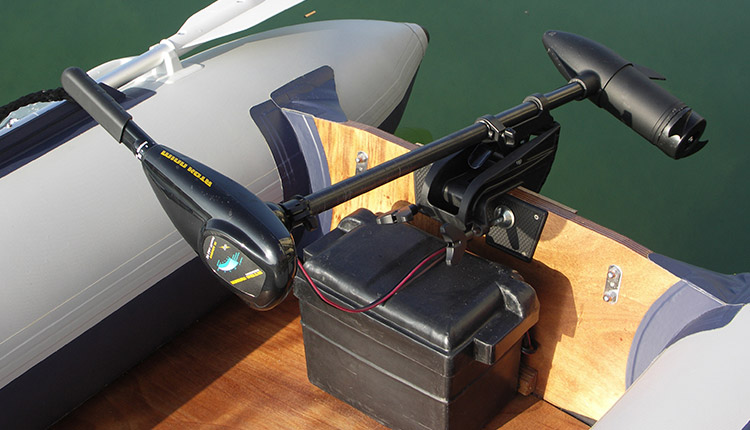
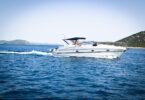

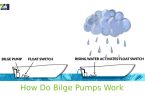
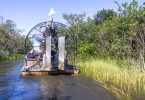
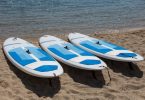

Leave a Comment